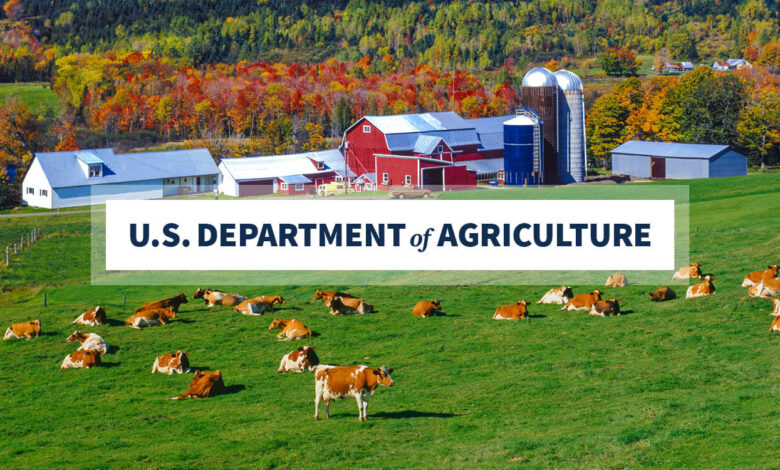Update to USDA Entity-Scale Greenhouse Gas Methods Report Available

WASHINGTON, April 2, 2024 — The U.S. Department of Agriculture today published the second edition of Quantifying Greenhouse Gas Fluxes in Agriculture and Forestry: Methods for Entity Scale Inventory. The report provides farmers, ranchers, and forest landowners with the methods and tools needed to assess the greenhouse gas (GHG) footprint of their operations. The 2024 report improves upon the methods outlined in the original 2014 report to increase their accuracy, provides new methods that allow users to better quantify the GHG benefits of additional management practices, and introduces several improvements to make the report more user-friendly.
“USDA’s updated greenhouse gas methods report represents a critical scientific consensus which ensures confidence in the benefits from climate-smart agriculture and forestry,” said Agriculture Secretary Tom Vilsack. “This report will help guide conservation efforts, improve our greenhouse gas estimation on U.S. farms, and support markets for carbon and climate-smart products nationwide.”
Section 2709 of the Food, Conservation, and Energy Act of 2008 directed USDA to “establish technical guidelines that outline science-based methods to measure the environmental service benefits from conservation and land management activities in order to facilitate the participation of farmers, ranchers, and forest landowners in emerging environmental services markets.”
These estimation methods are the foundation for COMET-Farm, an online farm and ranch carbon and greenhouse gas accounting system developed by USDA and Colorado State University. It helps farmers and ranchers create a farm-scale GHG inventory and provides them with a range of management scenarios that, if implemented, could reduce GHG emissions from their operations.
The update ensures the report and USDA’s entity-scale GHG accounting tools continue to reflect the best available science, providing guidance to farmers, ranchers and forest landowners interested in quantifying the GHG benefits of management changes in their operation. The guidance and tools will also help USDA assess the benefits of current and future conservation programs and initiatives.
The 2024 update is the result of four years of work by a team of more than 60 authors, including USDA scientists, university researchers, and experts from nongovernment environmental organizations and research institutions, who have developed consistent metrics for estimating changes in GHG emissions and carbon sequestration for farm, ranch, and forest operations. The updates to the report were reviewed by more than two dozen scientists, other federal agencies, the public, and a panel of interdisciplinary experts to ensure it meets the criteria established by the White House Office of Management and Budget for highly influential scientific assessments (HISA), a designation reserved for the most influential science published by the federal government. The HISA review can be found on OCE’s Peer Review website.
USDA has been a leader in conducting regional and national GHG inventories for decades, and its scientists have a long history of collaborative research with universities to advance the scientific understanding of agriculture’s role in helping to mitigate and adapt to climate change.
The report is available online at www.usda.gov/oce/entity-scale-ghg-methods.
USDA touches the lives of all Americans each day in so many positive ways. Under the Biden-Harris Administration, USDA is transforming America’s food system, with a greater focus on more resilient local and regional food production, fairer markets for all producers, ensuring access to safe, healthy and nutritious food in all communities, building new markets and streams of income for farmers and producers using climate smart food and forestry practices, making historic investments in infrastructure and clean energy capabilities in rural America, and committing to equity across the Department by removing systemic barriers and building a workforce more representative of America. To learn more, visit www.usda.gov.
#
USDA is an equal opportunity provider, employer, and lender.



